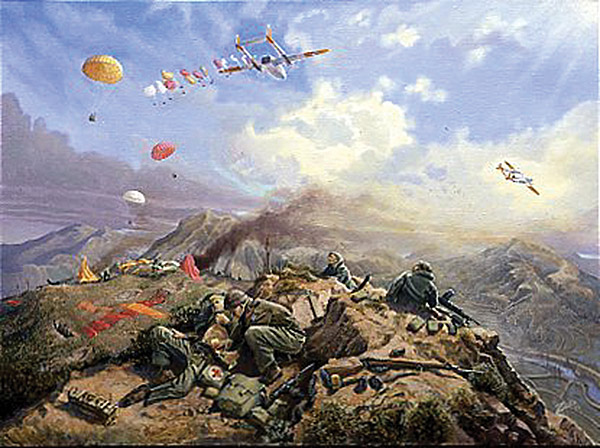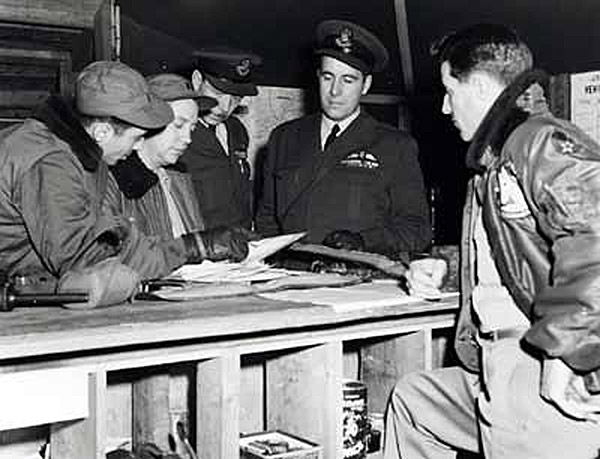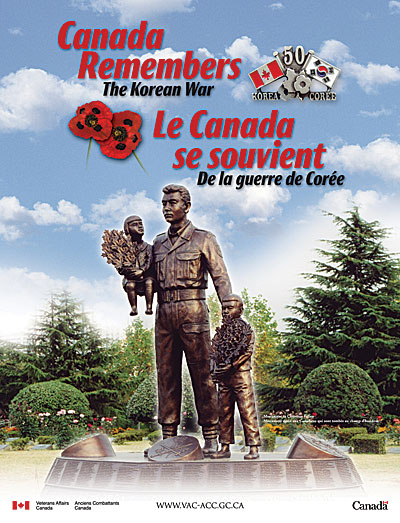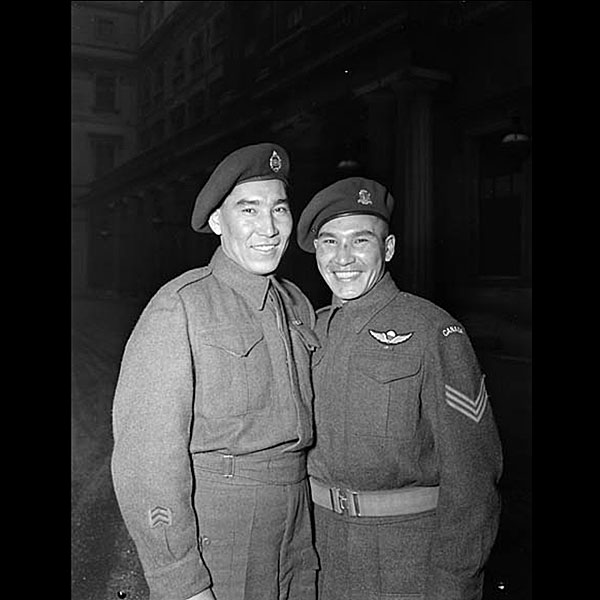Canada Remembers Times - 2007 Edition - Page 3
Canadians in the Battle of Kapyong

Source: AN 19900084-001. Beaverbrook Collection of War Art. © Canadian War Museum (CWM).
Canadians who served in the Korean War saw a lot of fighting. Few episodes, however, were as intense as the experiences of the 2nd Battalion of the Princess Patricia's Canadian Light Infantry during the Battle of Kapyong.
On April 24, 1951, the Princess Pats, along with other forces of the 27th Commonwealth Brigade, defended an important valley near the Imjin River during an all-out enemy attack. The goal was to allow United Nations forces to withdraw from the area and stop the North Korean and Chinese forces.
The Canadians came under intense fire during the night from waves of charging enemy soldiers. At times they were completely surrounded. The situation was desperate – their ammunition was running low. The only way to get new supplies was to drop them by air.
During the fight, 10 Canadians were killed and 23 wounded, but the Princess Pats maintained their position. The Battalion received the United States Presidential Unit Citation for their bravery in Kapyong, a rare honour for a non-American military unit.
Canada's Navy and Air Force in the Korean War

Photo: DND/PL 52187
Canadian soldiers weren't the only ones making sacrifices during the Korean War. Canadian sailors and airmen also served. Destroyers from the Royal Canadian Navy (RCN) were Canada's first contribution to United Nations (UN) Forces fighting there, arriving in the waters off Korea during the summer of 1950.
Korea is a peninsula with many offshore islands. Canadian ships had many different duties, including shelling enemy positions during amphibious landings; escorting aircraft carriers; supplying islands holding out against the enemy; destroying enemy trains running along the coast; and delivering supplies to isolated coastal villages.
The Royal Canadian Air Force (RCAF) provided key support to UN Forces from early in the war. For example, No. 426 Transport Squadron made 600 round trips across the Pacific Ocean, carrying more than 13,000 passengers and three million kilograms of freight and mail. Twenty-two RCAF fighter pilots and a number of technical officers also served with the US Fifth Air Force.
Break the Code
In times of conflict, those in battle need to communicate with their own forces – but they don't want their enemy to know what they are saying. Carrier pigeons, field telephones, signal lamps and Aboriginal Canadians "codetalkers" have helped to send secret messages. Most commonly, messages were encoded. However, there were always code-breakers who did their best to decipher the messages. Try to crack this message. The key to the code is: 1=A, 2=B, C=3, etc.

Secret Message - Break the Code
The Monument to Canadian Fallen

Image: VAC
One of the most visible ways we remember our heroes is by building monuments to commemorate their sacrifice and achievements.
In April 2002, the Monument to Canadian Fallen was dedicated at the United Nations Memorial Cemetery in Busan, South Korea.
It includes a statue of a Canadian soldier with two Korean children. Inscribed on the monument is, "Well never forget you, brave sons of Canada" in English, French and Korean, along with the names of the 516 Canadians who were killed in service to Canada during the Korean War. A replica of the monument stands in Ottawa, not far from the National War Memorial.
The memorial shows no weapons or symbols of war. This reflects the quest for peace that inspired Canadians to serve in Korea–a desire that has fuelled all of Canadas contributions in overseas conflicts and international peace support operations.
Did You Know?

Photo: Library and Archives Canada/PA-002279
Manitoba's Tommy Prince fought in the Battle of Kapyong. Sergeant Prince was one of Canada's most decorated Aboriginal soldiers. He earned 11 military medals for his service in the Canadian Army during the Second World War and the Korean War.
- Date modified: